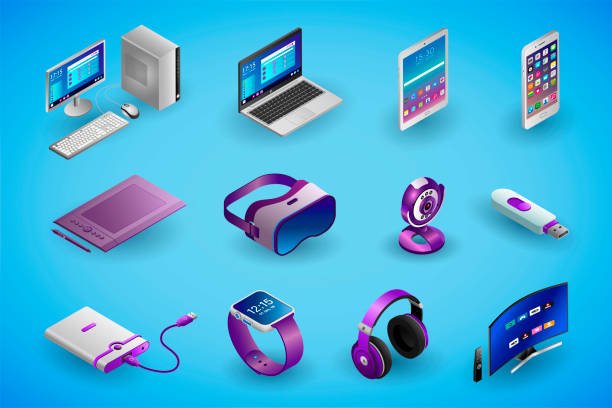Title: The Evolution of Gadgets & Devices: Shaping the Future of Everyday Life
In today’s fast-paced digital era, gadgets and devices have become integral to our daily routines. From the smartphones in our pockets to the smart home devices that manage our living spaces, technology has significantly transformed how we communicate, work, and entertain ourselves. This article explores the evolving landscape of gadgets and devices, highlighting some of the most impactful innovations and what the future may hold.
The Rise of Smartphones: A Pocket-Sized Revolution
Arguably one of the most important devices of the modern age, the smartphone has reshaped the way we live. What started as a simple communication tool has evolved into a multifunctional powerhouse, offering access to the internet, social media, entertainment, banking, and much more. Innovations such as 5G technology, foldable screens, and advanced AI-powered cameras have made smartphones more powerful and versatile than ever.
Popular brands like Apple, Samsung, and Google continue to push the boundaries of mobile technology, with smartphones becoming not just a tool for communication but an extension of our digital lives. With apps for virtually everything, from fitness tracking to controlling smart home devices, smartphones have cemented their place as one of the most important gadgets in the modern world.
Smart Home Devices: Automation for Convenience
The concept of a “smart home” is no longer a futuristic dream but a present-day reality. Smart home devices, such as smart thermostats, lighting systems, and security cameras, allow homeowners to automate and remotely control various aspects of their homes. These devices are often connected through smart assistants like Amazon’s Alexa, Google Assistant, or Apple’s Siri, enabling seamless voice control for everything from adjusting the temperature to turning off lights.
Additionally, the rise of smart appliances—such as refrigerators that can order groceries or washing machines that notify you when a load is done—has enhanced convenience in daily life. Smart home ecosystems are becoming more interconnected, making it easier for users to manage multiple devices through a single app or platform.
Wearable Devices: Health and Fitness on Your Wrist
Wearables like smartwatches and fitness trackers have become increasingly popular over the past decade, and their functions have expanded far beyond merely telling time. Modern wearables track vital health metrics such as heart rate, sleep patterns, and oxygen levels, offering users insights into their health and well-being.
Brands like Fitbit, Garmin, and Apple have revolutionized the fitness tracking industry, encouraging users to stay active and healthy. Some wearables are now equipped with ECG sensors, fall detection, and even blood glucose monitoring, making them valuable tools for managing chronic health conditions. As wearable technology continues to advance, the focus on health and fitness monitoring will likely grow, providing users with even more personalized data and insights.
Tablets and Laptops: Bridging Work and Play
While smartphones dominate the communication space, tablets and laptops continue to serve as essential tools for both work and entertainment. Tablets, such as the iPad, offer a hybrid experience, blending the portability of a smartphone with the functionality of a laptop. Laptops, meanwhile, remain the go-to devices for professionals and students alike, offering powerful computing capabilities for tasks like coding, design, and video editing.
As remote work becomes more common, hybrid devices like 2-in-1 laptops have gained popularity, offering the flexibility to switch between tablet and laptop modes. With the advancement of processors, storage, and battery life, these devices have become more efficient, allowing users to perform demanding tasks on the go.
Gaming Consoles and VR: Entertainment on the Cutting Edge
For gaming enthusiasts, devices like the PlayStation 5, Xbox Series X, and Nintendo Switch have set new standards in home entertainment. These consoles offer high-quality graphics, faster load times, and immersive gameplay, pushing the boundaries of what’s possible in the gaming world. Coupled with the growing popularity of cloud gaming services, gamers can now enjoy a seamless experience without the need for expensive hardware.
Virtual Reality (VR) devices like the Oculus Quest have also made significant strides in recent years. Once considered a niche technology, VR has gained mainstream attention, offering immersive experiences in gaming, education, and even virtual meetings. As technology advances, VR and Augmented Reality (AR) devices are expected to become more integrated into various aspects of life, from virtual shopping experiences to remote work collaboration.
The Future of Gadgets: What to Expect
Looking ahead, the future of gadgets and devices is both exciting and unpredictable. Several trends indicate the direction technology is headed:
- AI Integration: As artificial intelligence becomes more sophisticated, we can expect more gadgets and devices to leverage AI for personalized experiences. From AI-powered cameras that adjust settings based on the environment to smart assistants that learn user preferences, AI will play a crucial role in shaping future devices.
- Foldable and Flexible Displays: The introduction of foldable smartphones is just the beginning. Flexible displays could soon make their way into tablets, laptops, and even wearables, offering a new level of versatility in device design.
- Sustainability: As environmental concerns grow, tech companies are looking for ways to make gadgets more sustainable. This includes using recyclable materials, improving energy efficiency, and creating longer-lasting devices to reduce e-waste.
- 5G and Beyond: With the global rollout of 5G well underway, faster and more reliable internet connectivity will enable new possibilities for devices. In the future, we might see innovations like fully autonomous vehicles, smart cities, and even real-time holographic communication, all powered by ultra-fast networks.
Conclusion
The world of gadgets and devices is ever-evolving, driven by rapid technological advancements. From smartphones to smart home devices, wearables to gaming consoles, technology continues to shape how we interact with the world around us. As innovation progresses, the future promises even more exciting possibilities, making gadgets and devices an essential part of modern life. Whether it’s through increased connectivity, health monitoring, or entertainment, these devices are here to make life more efficient, engaging, and enjoyable.
